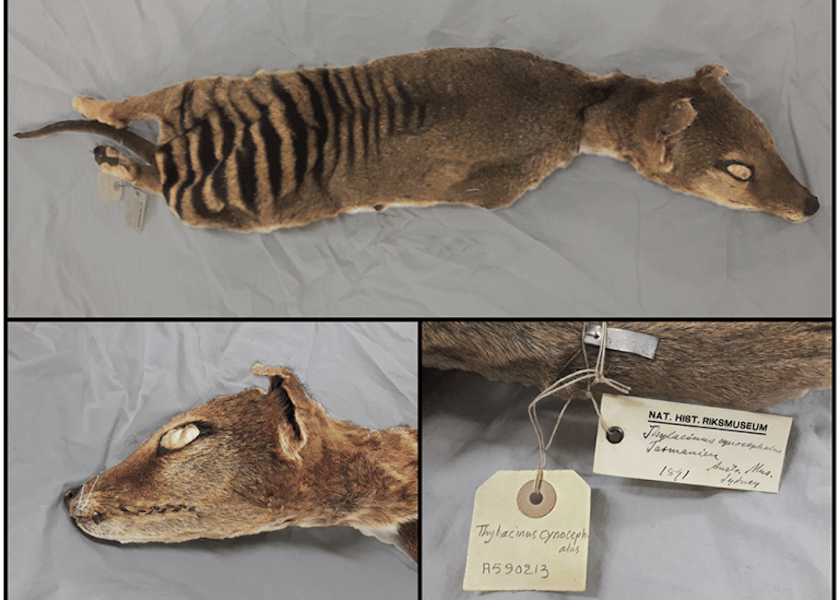Scientists have successfully extracted RNA molecules from an extinct species for the first time. The milestone was achieved in the thylacine, a species of carnivorous marsupial that roamed Australia until about a century ago – and may again one day, if current plans bear fruit.
Once widespread across Australia, the thylacine spent the last few millennia of its existence isolated on the island of Tasmania. There, it proved easy pickings for the first European colonizers who regarded it as a pest to their farmland and killed them systematically. After a few decades the creature’s trajectory became clear, and government protections were eventually implemented – but it was far too little too late, and the last known specimen died in captivity in 1936.
Given the freshness of its extinction (and perhaps a healthy dose of guilt), the thylacine is on the shortlist of species set for “de-extinction.” Along with the mammoth and the dodo, genetics company Colossal Biosciences has declared its intention to resurrect the thylacine through genetic engineering techniques.
To that end, scientists have been able to almost completely reconstruct the thylacine’s genome. But this DNA blueprint is actually just one part of the biological puzzle – scientists also need its “transcriptome,” or its RNA blueprint, which details how genes are expressed and regulated in different tissues of the body.

Emilio Mármol Sánchez and Panagiotis Kalogeropoulos
Now, scientists in Sweden have taken the first step towards this goal, by extracting RNA from a thylacine specimen preserved in a museum collection for 130 years. This is not just a first for the thylacine but for any extinct species, because RNA tends to degrade very quickly outside of a living cell.
In the new study, the researchers developed a new method for extracting ancient RNA by adapting techniques usually used on more recent samples. In doing so, they managed to extract and purify hundreds of millions of RNA fragments from the thylacine’s skin and muscle tissue. After accounting for duplicates and unusably short sequences, they ended up with 1.5 million muscle RNA sequences and 2.8 million skin ones.
Analysis linked the muscle RNA sequences to 236 genes, including those that produce proteins like actin and titin, which are responsible for stretching and contraction. The skin samples corresponded to 270 genes, such as one that produces keratin, a protein that forms the tough coating of skin, hair and nails. Intriguingly, the team was even able to identify a few fragments of RNA molecules that appeared to come from viruses that lived in or on the thylacine.
This study helps build a more complete picture of the thylacine, giving Colossal a better footing in reviving the creature. That said, of course, it’s still quite a long way off, if ever. In the meantime, the new work suggests other museum specimens could be hiding usable RNA molecules that can provide new insights.
The research was published in the journal Genome Research.
Source: Stockholm University via Nature
Source of Article